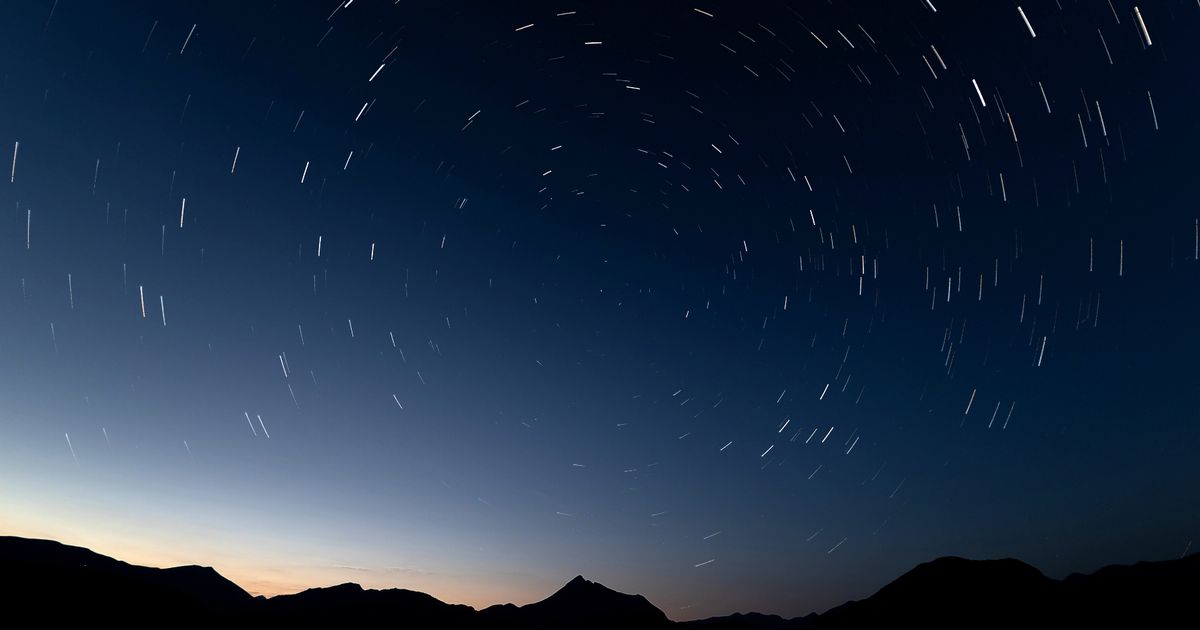Tonight, July 29 to 30, could be the best night to watch ‘shooting stars’ dazzle the night sky this summer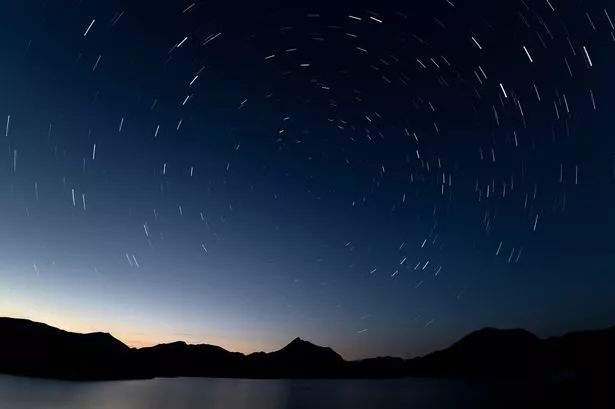 Two summer meteor showers are about to peak on the same night(Image: Anadolu via Getty Images)
Two summer meteor showers are about to peak on the same night(Image: Anadolu via Getty Images)
A rare celestial treat awaits tonight as two meteor showers peak at the same time.
Stargazers lucky enough to be graced with clear skies can catch the Southern Delta Aquariids and the Alpha Capricornids tonight (July 29 to 30).
While both showers will be visible until mid-August, they are expected to be most active in the early hours of Wednesday (July 30), with up to 30 meteors per hour set to dazzle the night sky.
What’s more, the Perseids meteor shower could also offer an extra sprinkle of ‘shooting stars’ thanks to dark skies created by the Moon setting early.
Southern Delta Aquariid and Alpha Capricornid meteor showers
The Delta Aquariids, which are believed to originate from the trail of Comet 96P/Machholz, could deliver around 25 meteors an hour at peak activity. According to EarthSky, between five and 10 per cent of these meteors leave glowing persistent trains.
Visible between July 12 and August 23, the Delta Aquariids offer a steady steam of meteors for sky watchers across the UK. According to Starwatch, its activity can be strong leading up to and after its peak between July 28 and 30.
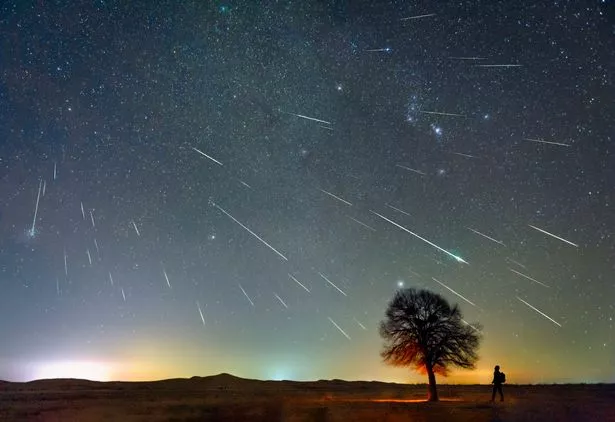 The Delta Aquariids is one of several meteor showers in July(Image: Getty Images)
The Delta Aquariids is one of several meteor showers in July(Image: Getty Images)
Although best viewed from the Southern Hemisphere, the Royal Observatory Greenwich says those living in the UK and at mid-latitudes in the Northern Hemisphere will still be able to catch a glimpse of the meteor shower.
Meanwhile, the Alpha Capricornid meteor shower has more slow-moving meteors, with tails that may linger for slightly longer than the Aquariids’, Nick Moskovitz, an assistant astronomer at the Lowell Observatory in Flagstaff, Arizona, told the Associated Press.
At the peak of the Alpha Capricornids, up to five ‘fireballs’ per hour can be spotted, which originate from the debris trail left by the comet 169P/NEAT.
While the two annual showers almost always peak within a day or two of each other, it’s extra special that this year their peak nights coincide closely.
Best time to spot ‘shooting stars’ in UK skies
Around the peak, the Moon will have set before the meteors become visible in the early hours of the morning, meaning even faint meteors will light up the sky.
The best time to spot the shooting stars is after midnight and before 5.30am.
The Delta Aquariids meteors will appear to radiate from the constellation Aquarius in the southern sky, near the bright star Delta Aquarii, while Alpha Capricornid meteors appear to originate from the constellation Capricornus, also in the southern sky.
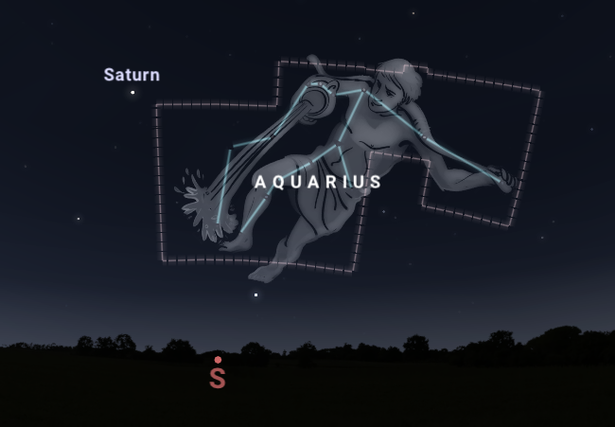 Shooting stars will appear to radiate from the constellation Aquarius near Saturn at around 4am(Image: Stellarium)
Shooting stars will appear to radiate from the constellation Aquarius near Saturn at around 4am(Image: Stellarium)
The shooting stars will be visible to the naked eye so no special equipment is necessary. If skies are forecast to be clear, stargazers have the best chance of spotting the meteor shower in areas away from trees, tall buildings and light pollution.
After allowing your eyes to adjust to the dark for 10 minutes, look up at the sky and keep an eye out for shooting stars.
More night sky events to look forward to
The Perseids meteor shower, which began on July 17, will remain visible until August 24. During its peak, up to 150 meteors an hour can be spotted in the night sky, which the Royal Observatory Greenwich says is one of the “most dramatic” things to see in the summer’s night sky.
However, the full Sturgeon Moon will rise on the evening of August 8, meaning the bright Moon will likely drown out the view of the meteors. Instead, the Perseids will be best viewed this week, when skies are dark thanks to a young, early-setting Moon.
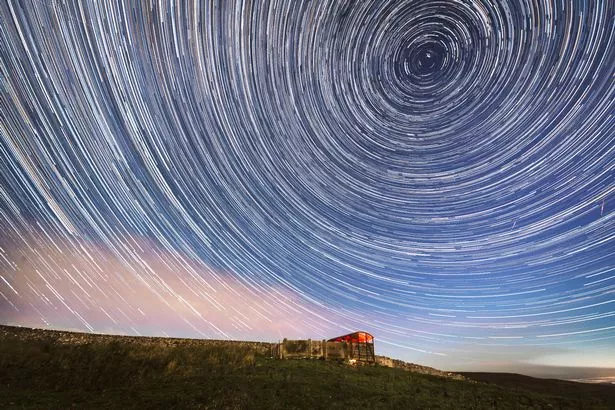 Meteors and star trails during the Perseid meteor shower(Image: PA)
Meteors and star trails during the Perseid meteor shower(Image: PA)
Later in August, another planet parade will grace UK skies. Early in 2025, sky watchers were treated to a rare celestial display when seven planets sat above the horizon at the same time.
On August 18, a planetary alignment will form in the morning sky when Mercury, Venus, Jupiter, the Moon and Uranus will all be positioned in a straight line in the eastern sky. Saturn and Neptune will also be sitting together in the southwest.
Including the Moon, seven Solar System bodies will be positioned above the horizon at one time, with only Mars absent from the planet parade. The alignment will be visible for about 45 minutes before sunrise at around 6am, according to The Farmers’ Almanac.
Just weeks later, on September 7, a total lunar eclipse will be visible from the UK. A lunar eclipse occurs when the Moon passes out of the Sun’s rays and into the Earth’s shadow, turning the Moon a vibrant orange-red known as a ‘Blood Moon’.
The event will begin just after 7pm and last until around 10pm, but its maximum will happen at around 7.33pm BST, according to the Royal Observatory Greenwich.

